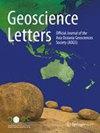盐湖盆地地层水的地球化学特征及成因:柴达木盆地三湖凹陷第四纪垣曲地层个案研究
IF 4.3
3区 地球科学
Q1 GEOSCIENCES, MULTIDISCIPLINARY
引用次数: 0
摘要
弄清地层水的地球化学特征及其成因,有利于明确天然气的运移路径,阐述天然气的运移和聚集规律,进一步预测天然气聚集的有利区域。以三湖凹陷台南-泗北地区第四系地层水为研究对象,采用阴离子分析、阳离子分析、氢同位素分析、氧同位素分析等方法,阐明了该地区地层水的化学特征和成因。研究结果如下(1)研究区地层水溶解性总固体(TDS)含量较高,主要为 CaCl2 的 IV 型和 V 型;(2)r(Na+)/r(Cl-)较低、脱硫系数较低、r(Ca2+)/r(Mg2+)较高、碱交换指数较高,说明七格泉地层处于停滞区,有利于生物气的积累和保存。(3)由于白化和水岩反应,地层水富含 Ca2+,贫 Na+,贫 Mg2+。(4) 研究区的地层水来源于昆仑山冰川融水,冰川融水转化为地下水后沿山体斜坡带渗入地层。在地下水的渗透和汇聚过程中,地层中的许多盐类物质被溶解,导致 TDS 逐渐增加。然后,TDS 较高的地层水迁移到洼地北部的反斜面,最后被困在地层中。本文章由计算机程序翻译,如有差异,请以英文原文为准。
Geochemical characteristics and origin of the formation water of the Saline Lake Basin: a case study of the Quaternary Qigequan Formation in the Sanhu Depression, Qaidam Basin
Clarifying the geochemical characteristics of formation water and its origin is conducive to clarifying the gas migration path, elaborating the law of gas migration and accumulation, and further predicting the favourable area of gas accumulation. Taking Quaternary formation water from the Tainan-Sebei area of the Sanhu Depression as the research object, the chemical characteristics and origin of the region are clarified using anion analysis, cation analysis, hydrogen isotope analysis, oxygen isotope analysis and so on. The results are as follows. (1) The formation water in the study area has a high total dissolved solids (TDS) content and is mainly type IV and V of CaCl2. (2) Low r(Na+)/r(Cl−), low desulfurization coefficient, high r(Ca2+)/r(Mg2+) and high indices of base exchange indicate that the Qigequan Formation is in a stagnant zone, which is beneficial for the accumulation and preservation of biogenic gas. (3) Due to albitization and water–rock reactions, the formation water is rich in Ca2+, poor in Na+ and poor in Mg2+. (4) The formation water in the study area originates from the glacial meltwater of the Kunlun Mountains, which converts into groundwater and seeps into the formation along the piedmont slope zone. In the process of groundwater infiltration and convergence, many salt substances in the formation are dissolved, resulting in a gradual increase in TDS. Then, the formation water with a high TDS migrates to the anticline in the northern part of the depression and is finally trapped in the formation.
求助全文
通过发布文献求助,成功后即可免费获取论文全文。
去求助
来源期刊

Geoscience Letters
Earth and Planetary Sciences-General Earth and Planetary Sciences
CiteScore
4.90
自引率
2.50%
发文量
42
审稿时长
25 weeks
期刊介绍:
Geoscience Letters is the official journal of the Asia Oceania Geosciences Society, and a fully open access journal published under the SpringerOpen brand. The journal publishes original, innovative and timely research letter articles and concise reviews on studies of the Earth and its environment, the planetary and space sciences. Contributions reflect the eight scientific sections of the AOGS: Atmospheric Sciences, Biogeosciences, Hydrological Sciences, Interdisciplinary Geosciences, Ocean Sciences, Planetary Sciences, Solar and Terrestrial Sciences, and Solid Earth Sciences. Geoscience Letters focuses on cutting-edge fundamental and applied research in the broad field of the geosciences, including the applications of geoscience research to societal problems. This journal is Open Access, providing rapid electronic publication of high-quality, peer-reviewed scientific contributions.
 求助内容:
求助内容: 应助结果提醒方式:
应助结果提醒方式:


